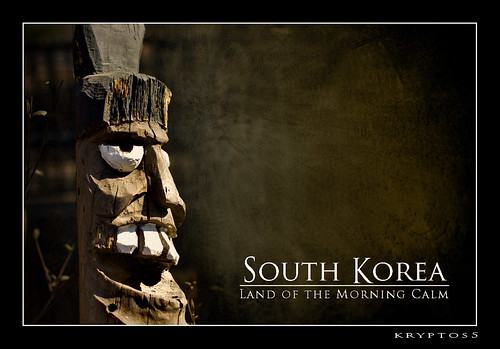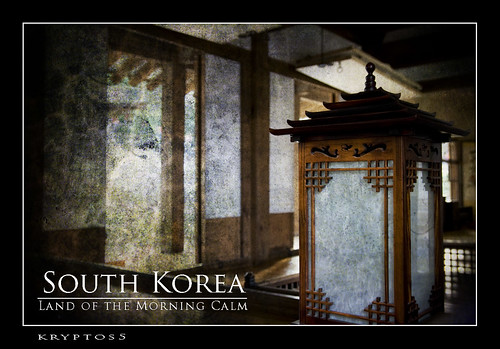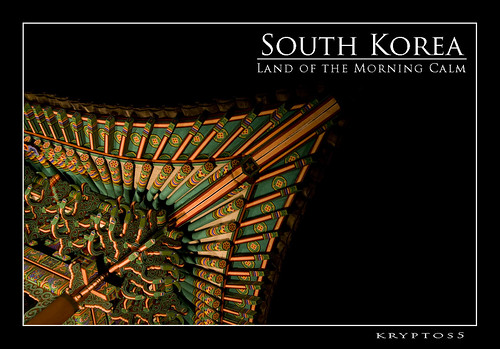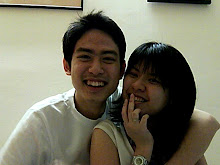Ideally speaking, I'd like to post those first before doing this. But, I've been wanting to share four of my favourite photos taken during the trip.
1. So, here goes, starting from the first one taken at Namiseom. (Day #2 - Korean Wave)

Jangseung 장승; 長承
This is a Korean totem pole, usually placed at the edges of villages to ward off evil spirits. In the olden days, Koreans used to practise shamanism that was influenced by Buddhism and Taoism from China.
2. This second one was taken at Namsangol Hanok Village. (Day #3 - A Cultural Evening)

Namsangol Hanok Village 남산골한옥마을
A lantern in a traditional Korean house.
3. The third one, somewhere in the city, next to a busy junction, and amidst skyscrapers. (Day #5)

Red and Green 단청; 丹靑
This pavilion is located at a busy junction in downtown Seoul. The contrasting colours of green and red were especially vibrant under the light up.
The word 단청 literally means "red and green". For a list of the names of different shades of red, please refer to Korean Language Notes.
4. Lastly, the one I like the most, taken at UNESCO site, Suwon. (Day 6)

Hwaseong, Suwon 수원화성; 水原華城
Suwon is about one hour from central Seoul. The fortress, Hwaseong is definitely a must-see spot. Built by King Jeongjo to guard his father's tomb, the walls surrounded the city of Suwon. The place is now designated as a UNESCO World Heritage site.
This gate (Janganmun), located in the north, and the other one (Paldalmun ) in the south are the largest of the four gates. They resemble Namdaemun in Seoul, which unfortunately has been wrapped under vinyl sheet since the arson incident.
Notice the five small figures on both ends of the roof? They're the characters from Journey to the West: the Monk, the Monkey, the Boar, the River Monster, the Horse and a dragon. What role the famous Chinese novel played in Korean history, I haven't got the chance to find out.

1 persons flung their shoes:
Well... at least you managed to blog about it...
last time i tried to blog about my travels, i only managed to blog up till the part i went out of my house.
Post a Comment